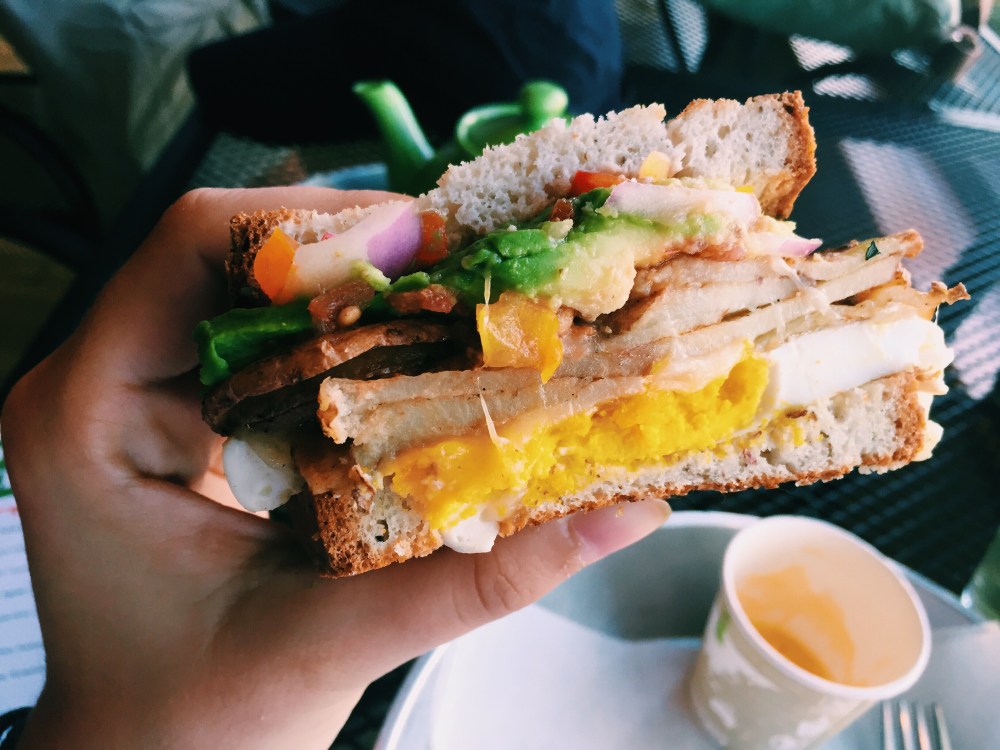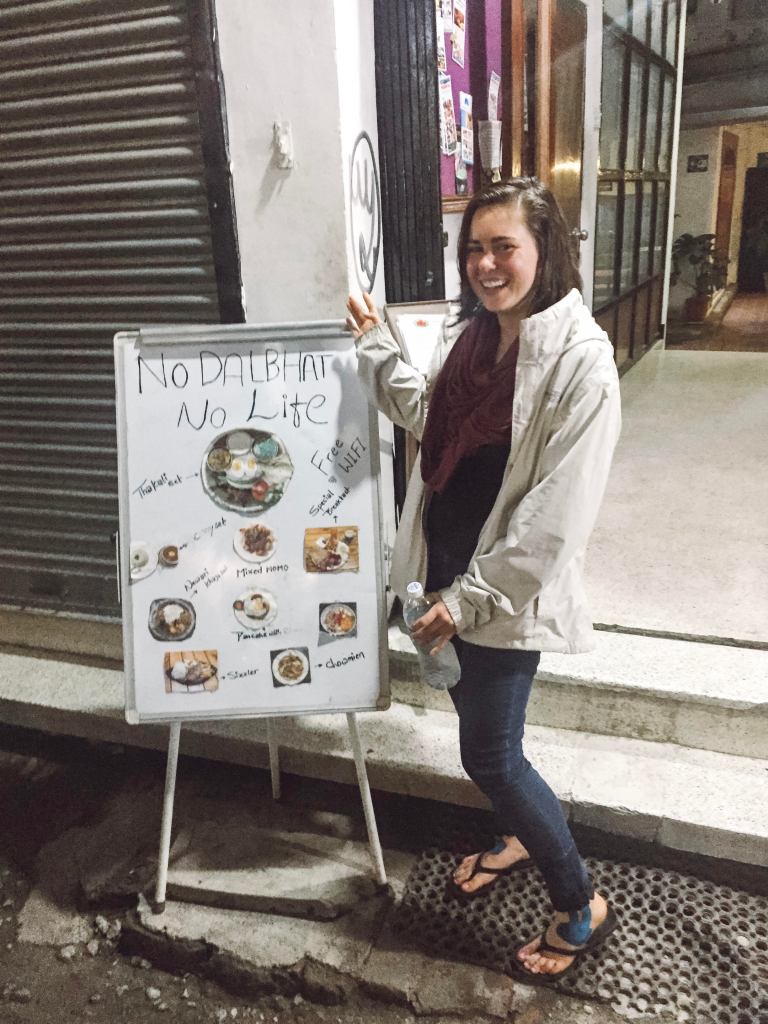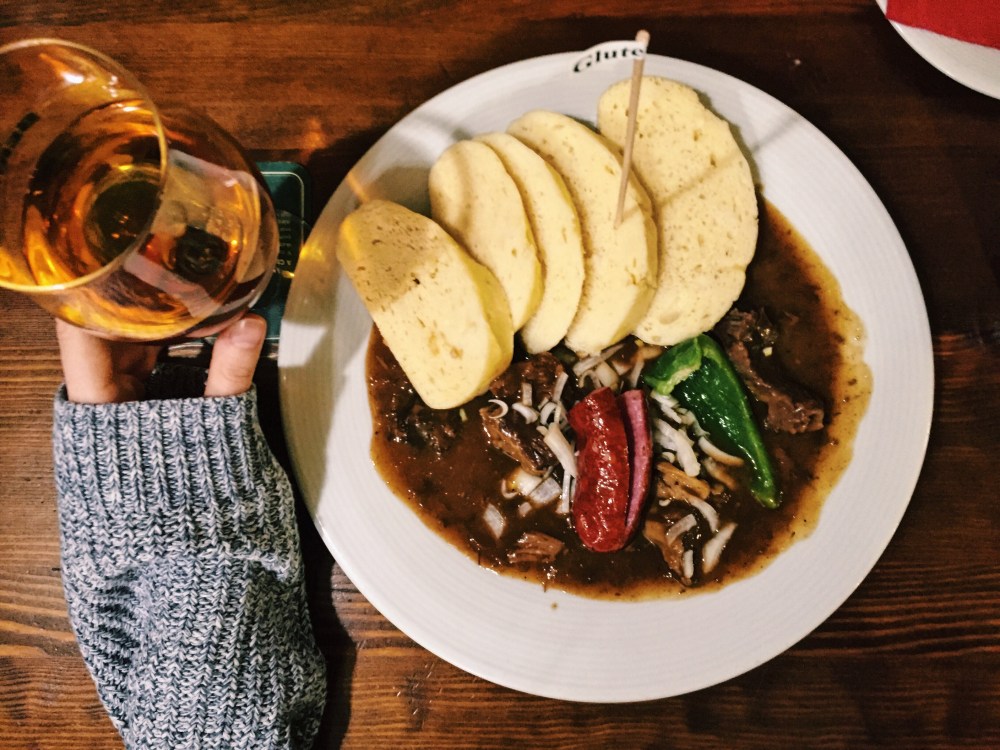Gluten-free travel can be an extra challenge, but it shouldn’t stop you from venturing out into the world! Sarah Bence has been traveling gluten-free for years. She has great advice to offer so your next international trip will go smoothly.
When my doctor first told me I had to go on a strict gluten-free diet, I felt devastated. It was nine years ago, right before my year of study abroad. Gluten-free diets weren’t such a fad back then and I wondered if feeding myself and fulfilling my traveling dreams were two contradictory experiences. Despite my initial fears, in the past nine years, I’ve traveled to over 30 countries and lived abroad twice, all while eating strictly gluten-free.

Of course, there has been some trial and error – an accidental glutening on some Greek Islands, eating the same meal every day for two weeks in the Himalayas, cross-contact on a road trip through Scotland, and more.
But over the years I’ve become an expert on gluten-free travel, and want to share this expertise with anyone else who has celiac disease or non-celiac gluten sensitivity (NCGS).
One of the best ways to ensure a safe gluten-free travel experience is to plan ahead. I’ve found this is especially important for international travel. Here are five things that I always do (and recommend you adopt, too) before each trip.
1. Buy a gluten-free translation card
If you’re heading to an international destination, chances are they won’t speak your native language there. Us celiacs and gluten-intolerants basically survive by extensively quizzing waitstaff about gluten-free options and cross-contact protocol. Obviously, this becomes a challenge if you can’t speak the language!
Luckily, there are a few gluten-free translation cards on the market that can help with this. Celiac Travel offers free translation cards in 63 languages. My personal preference is the translation cards from Legal Nomads. Jodi (of Legal Nomads) is a travel blogger with celiac disease who created translation cards with celiac disease in mind – each card extensively discusses cross-contact. These cost $8.99 but are well worth the investment.

2. Research local cuisine and gluten-free restaurants
Another key to safe international gluten-free travel is research before your trip. If I’m heading to a country that doesn’t widely recognize celiac disease, I will research the local cuisine and find traditional dishes that are naturally gluten-free. For instance, this is how I ended up living off tagine in Morocco and dal bhat in Nepal.

If I’m heading to a country that does recognize celiac disease and gluten, I focus more on finding specific restaurants that cater to gluten-free diners.
I do this by searching for the term “gluten-free” on TripAdvisor reviews, using apps like Find Me Gluten Free (mostly useful in North America and hit or miss in other regions), posting in gluten-free travel Facebook groups, searching for bloggers’ gluten free guides on Pinterest, and more.
Then, I make a list of potential restaurants and often will email the staff to confirm gluten-free options are available, and that safe procedures are followed to prevent cross-contact.
3. Create a gluten-free travel map on Google My Maps
Once I have a list of gluten-free restaurants in my destination city, I make a personal map on Google My Maps. Sometimes, if I’m feeling extra, I’ll color-code the 100% gluten-free establishments, as these are obviously the safest (and most exciting!) places to eat.
Creating a Google My Maps is a bit of work, but it makes things so much easier when you’re on the road. Instead of having to find wifi so I can search for a gluten-free restaurant (and then potentially walking miles to get there), now I just open my map when I get hungry, and find the closest pre-marked restaurant to my current location.
You can also use Google My Maps without data or wifi, which is ideal for international travel if you’re like me and don’t have an international phone plan.

4. Contact the airline for a gluten-free meal
Another thing on your to-do list should be reserving a gluten-free meal on your international flight.
Many people aren’t aware that most airlines now offer gluten-free meals (alongside vegetarian, halal, and other allergy-friendly meals). Depending on the airline, you can book your gluten-free meal during your initial reservation, or call ahead to the airline directly.
Keep in mind that most airlines need a minimum of 48 hours advance notice to provide a gluten-free meal.
One thing I’ll mention is that many airlines prepare their gluten-free meals in a shared facility. This means there is a potential for cross-contact – and I have read some horror stories of people stuck on 11-hour flights and given a “gluten-free meal” complete with breaded chicken or wheat ingredients.
So always check the ingredient list before you eat your airline meal, and make sure to pack some snacks just in case.

5. Pack gluten-free snacks and food (that are TSA-friendly)
Speaking of snacks, this is the fifth, final, and maybe most important item on my gluten-free travel checklist.
I always make sure to pack travel-friendly snacks – such as power bars, jerky, nuts and seeds, and more. This way I’m less stressed (and hangry) if I end up in a situation without any gluten-free food options.
You can also pack an entire meal to carry on the airplane, as long as liquids are below 3oz (or frozen – that’s my secret trick!). This is useful if I need to eat a meal during a layover between two international flights.
I also always like to take gluten-free essentials like dried pasta, gluten-free bread (if I’m traveling somewhere with a low probability of finding it in-country), pre-packed purity protocol oatmeal, and reusable toaster protection packets. I also know some people travel with their own sponges and cutting boards.
Gluten-free travel doesn’t have to be hard, and celiac disease doesn’t have to prevent you from seeing the world! In fact, because of my extra dietary needs, I tend to see more of a place and get more off-the-beaten-path (searching for 100% gluten-free restaurants, of course!).
As long as you prepare yourself properly, and try to take a positive attitude, safe gluten-free travel is totally possible.
What do you think? Are you ready to take on international gluten-free travel adventures now?














































